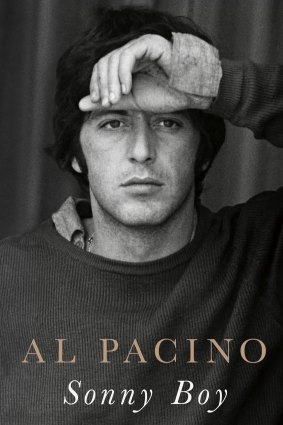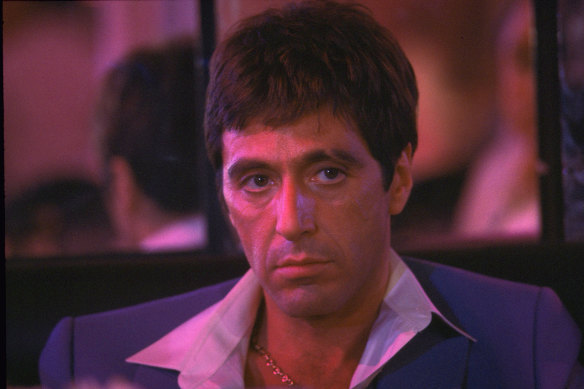
Al Pacino’s memoir takes readers behind the scenes of many of his roles.
MEMOIR
Sonny Boy
Al Pacino
Penguin
They’re words on a page, but it’s Al Pacino’s distinctive voice you can hear throughout the actor’s 370-page memoir. The musical cadence of his Bronx accent, the clipped speech, emphatic intonations and wry humour, the passionate earnestness and take-me-as-I-am directness: all the features that come attached to the charismatic Pacino persona we’ve become familiar with over the years.
Borrowing its title from a nickname bestowed on him by his mother, who took it from Al Jolson’s song, Sonny Boy offers a selective survey of the actor’s life filtered through an overreaching air of astonishment. At the same time, though, he has an unassailable self-belief. The book’s first chapter is entitled “A Blade of Grass”, drawing on how his friend, famed acting coach Lee Strasberg, described talent: as “a blade of grass growing up out of a block of concrete”.
The Pacino story begins with his impoverished childhood spent in just such a block, in a rough neighbourhood in the South Bronx, going to the movies with his troubled but loving mother, quitting school at 16, roaming the streets with his friends, and making do as best he could. He looks back on it all with a compassion informed by the passing of time: “My mother’s tragedy was poverty,” he observes. But all along, first noted by a teacher, he had a gift for performing.
What follows provides an overview of his career in theatre and film, from the performance in Israel Horovitz’s The Indian Wants the Bronx after which “everything changed”, through the role in The Godfather that brought him global fame, to his as-yet unfulfilled wish to play King Lear. He makes no mention of his latest project, Modì, Three Days on the Wing of Madness, about Italian artist Amedeo Modigliani, which is directed by friend Johnny Depp (who features in the memoir), and premiered at last month’s San Sebastian Film Festival.

Al Pacino as Tony Montana in the 1983 film Scarface.Credit: Buena Vista Films
But, in often fascinating detail, he takes us behind the scenes of many of the other plays and films in which he’s starred, introducing us to people who’ve been important in his life. Among them are Charlie Laughton, the acting teacher at the Herbert Berghof Studio who became a close friend (not to be confused with the famous British actor), fellow thespians including John Cazale, Martin Sheen and Diane Keaton, and agent Marty Bregman. He also tries to make sense of the disorienting differences between his life in New York and the one in which he’s now immersed in Los Angeles.
As a writer (with the acknowledged assistance of Dave Itzkoff, an author and formerly a culture writer for The New York Times), Pacino is more an engaging conversationalist than a prose stylist fretting over how best to shape his saga about living in the shadow of his stardom.
Remembering an embarrassing moment from childhood, he admits, “I’m even squeamish to tell it now, but why not? That’s what we’re here for.” Sometimes he explains himself with a verbal wink, as when he ponders the responses to his performance as the coked-up crazy in Brian De Palma’s operatic gangster epic, Scarface (1983). “With Tony Montana, what you see is what you get,” he defiantly writes. “And f— you.”


